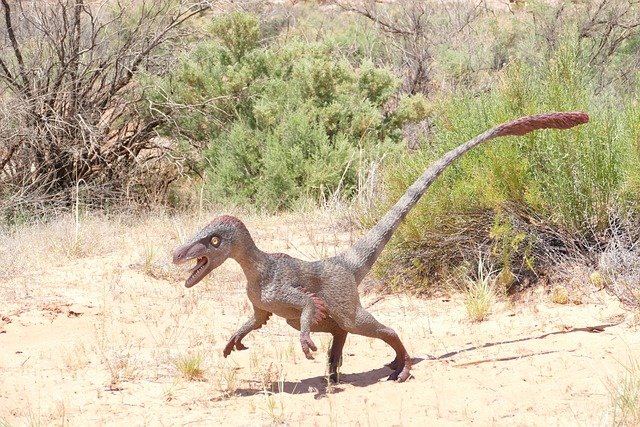It is now accepted in paleontology that many dinosaurs had feathers. However, they cannot necessarily fly. So why did dinosaurs evolve feathers? A new answer is now provided by a study published in the specialized journal Scientific reports Has been published. This suggests that ancient reptiles could have used the feathers on their front legs and tails to scare away prey. The “flight chase” hypothesis suggests that small, proto-winged dinosaurs may have used strategies similar to those used by some modern birds to catch their prey. The basis for this hypothesis comes from a comprehensive study examining dinosaur morphology, behavior, and neurobiology. The robot was also used here.
Insects react with the flight response
The researchers first conducted detailed ornithological studies on several insectivorous birds, and discovered that displaying contrasting plumage features, especially black and white spots on the wings and tail, led to prey flight responses and thus increased the birds' hunting efficiency.
Could dinosaurs behave this way too? To test potential hunting behavior, scientists led by robotics expert Hyungpil Moon built a robot called “Robopteryx” that mimics the look and behavior of Caudipteryx.
A fascinating new hypothesis for the paper to test is that the evolution of early flight feathers was driven in part by an enhanced ability to repel insect prey. And they use robot dinosaurs!https://t.co/KqJ4RAY4rx
—Matthew Shawkey (@mdshawkey) January 26, 2024
The robot is equipped with nine motors and is programmed to mimic the movements of the front legs and tail of birds feeding on the ground. It was only through the use of Robopteryx that researchers were able to observe the behavioral responses of grasshoppers, which may have appeared at the same time as the dinosaurs in question. Experiments with the robot showed that grasshoppers fled more often when the primary wings were located on the forelimbs, especially when the primary wings had white spots. The same thing happened with particularly large tail feathers.
Neurons respond to simulation
In order to test the hypothesis on a neurobiological basis, scientists used computer simulations. This enabled them to analyze the responses of grasshopper neurons to the appearance of dinosaurs. So they mimicked the dinosaur species Caudipteryx and introduced it to grasshoppers in the lab. Also in these studies, insect responses were more pronounced when primary wings and tail feathers were present.
“We believe that using feathers to scare away prey may increase the frequency of pursuit after escaping prey, reinforcing the importance of wings and the primary tail in maneuvering for successful pursuit,” said ecologist Sang Im Lee. press release. “This may lead to the development of larger, stiffer feathers, as this allows for more successful chases and more pronounced visual escape signals.”
Similar posts

“Alcohol buff. Troublemaker. Introvert. Student. Social media lover. Web ninja. Bacon fan. Reader.”






More Stories
Skin rash after eating asparagus? What could be behind it?
Warning signs of Alzheimer’s disease: Researchers find new evidence
Zoonoses: Do squirrels transmit leprosy?